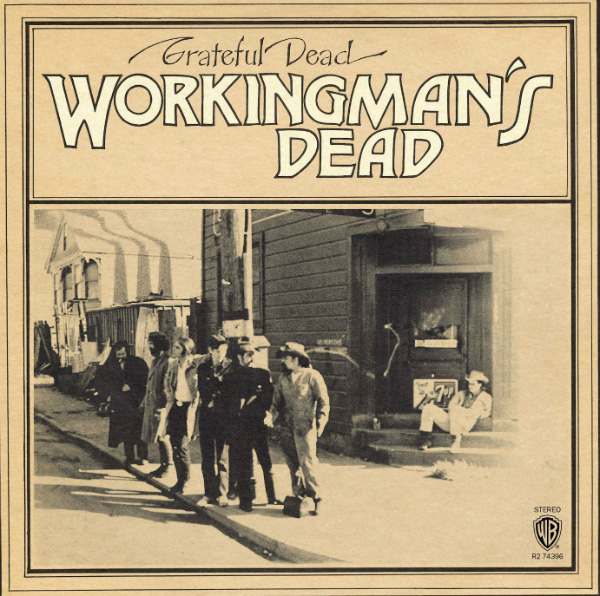
The Grateful Dead
Workingman’s Dead
(Warner Bros.)
5 out of 5 stars
Videos by American Songwriter
It’s become almost a cliché to say that the two studio albums released in 1970 by The Grateful Dead, Workingman’s Dead and American Beauty, are the high point of the band’s studio output. That probably depends what your favorite version of the Dead is. If you’re looking for the jamming flights of fancy that mark the band’s live shows, these two albums aren’t for you. But if it’s songcraft that’s your thing, then there is no doubt that the band was never better than on this duo. The first of those, Workingman’s Dead, was the product of a band that changed their tactics because they had no other choice, but necessity proved to be the mother of something truly special.
The Dead were having money issues at the time they made Workingman’s Dead, which meant they had to simplify. Another factor was that they, like so many other music fans, had become enamored with the harmonies of Crosby, Stills & Nash. “Hearing those guys and how nice they sounded together, we thought, we can try that,” Jerry Garcia recalled. “Let’s work on it a little.”
The shift to mostly acoustic material brought the harmonies to the forefront and also put a spotlight on Robert Hunter’s lyrics for the first time. It all came together immediately on opening track “Uncle John’s Band,” a gorgeously melodic balm for the frazzled nerves of a culture in upheaval. That song was bookended by “Casey Jones,” a genial rambler about a runaway train conductor, Hunter’s metaphor for an entire generation that can see its scary destiny and still barrels toward it at full speed. That was something with which the Dead could identify; “Trouble with you is the trouble with me,” Garcia sings.
In between those two high points, the Dead get to try on different styles and guises. There’s Band-like balladry (“High Time”), country rock à la The Byrds (“Dire Wolf”), and bluegrass (“Cumberland Blues.”) Percussive penultimate track “Easy Wind” is the only thing that sounds like it belongs on previous Dead albums; here it’s a bit of a sore thumb. By contrast, “New Speedway Boogie,” the band’s ornery take on the Altamont tragedy, is a far more effective change of pace from the mellower stuff surrounding it.
For all of these subtle stylistic shifts and the band’s heretofore untapped capability as harmonizers, what really elevates Workingman’s Dead are the uniformly great lead vocal efforts by Jerry Garcia. Chief among these is the mesmerizing “Black Peter,” a deathbed lament where Garcia, then all of 28, gives a harrowingly convincing performance. The album may not have the same amount of knockout songs as the follow-up American Beauty, but it makes up for it with the winningly ramshackle vibe that it maintains. It’s probably not fair to compare all other Grateful Dead albums to Workingman’s Dead. Better to compare Workingman’s Dead to some of the best albums in rock history, since it no doubt deserves that exalted status.

3 Comments
Leave a Reply